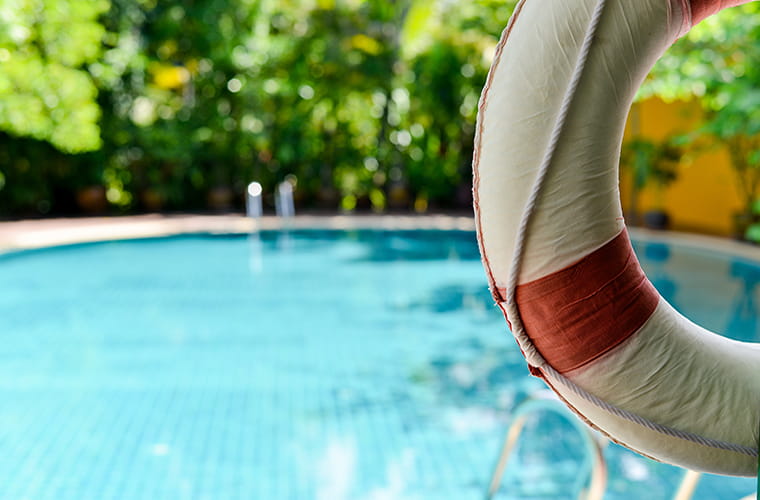Top Drowning Misconceptions and Tips to Keep Kids Safe Around Water

It’s something most parents think could never happen to their family, but nearly 1,000 children drown in the United States each year. Two-thirds of those deaths occur between May and August, making drowning the biggest summertime risk for children. For every drowning death, another five children are hospitalized for a near-drowning incident.
The BayCare Kids Wellness and Safety team is dedicated to the prevention of childhood drowning and near-drowning through education and outreach. Their efforts include CPR and First Aid training, distributing safety items such as door chime alarms, providing access to swim lessons when available, and more.
“Florida leads the nation in drowning deaths for children 5 years old and younger,” said BayCare Kids Wellness and Safety expert Gina Baez. “In fact, enough children drown in Florida each year to fill almost four preschool classrooms.”
Below are five common misconceptions about drowning and tips from Baez on what you can do to help keep children safe around water.
Misconception 1 – If a child were drowning nearby, I would hear it.
Unlike the cries of help heard as a result of most injuries, drowning is often quick and quiet when it occurs. In children especially, there is typically very little splashing, crying or screaming.
“If a child is missing, immediately check all bodies of water in and around your house before initiating any other search measures,” Beaz said. “Every second counts in a drowning incident.”
Misconception 2 – It’s OK to leave my child alone in or near a pool or another body of water for a few minutes while I fix lunch/grab my phone/answer front door, etc.
“The reality is that children can drown in just seconds,” said Baez. “Most drownings happen when a child is left unattended or during a brief lapse in supervision.”
A recent study by Safe Kids Worldwide indicates that approximately 35% of the participants admitted to leaving their child at a pool for two or more minutes without supervision.
Misconception 3 – If there is a fence around the pool, my child is safe from drowning.
Curious children, especially those younger than 4 years old, can easily find a way out of the home and fall into bodies of water like pools, hot tubs and ponds. The first line of defense is active supervision, but having multiple barriers in place like door locks, door alarms, gates and fencing provides overlapping layers of protection.
Results from a Consumer Product Safety Commission study of home pool drownings in children under age 5 in Florida found that in 7 out of 10 drownings the child was not expected to be in or near the pool at the time the incident occurred.
Baez adds that most children who drown were last seen in the home, had been missing from sight for less than five minutes and were in the care of one or both parents at the time of the drowning.
For pool owners, install four-sided isolation fencing, at least 5 feet high, and equipped with self-closing, self-latching gates. Fencing should completely surround swimming pools and prevent direct access from a house or yard.
Baez also recommends using door chimes or alarms to alert you when a door is opened and pool alarms, pool covers and pool fencing to add extra layers of protection. For a free door chime, email classes@baycare.org.
Misconception 4 – My child doesn’t need swim lessons.
Swim lessons will not “drown-proof” any child, but having them learn basic swim skills does add another layer of protection.
“Enroll children in swim lessons taught by qualified instructors when they are ready. Infants as young as 6 months can learn to roll over on to their backs and swim for the wall,” said Baez. “Afterwards, do not assume your child is safe from drowning. Children should always be supervised around any body of water.”
Misconception 5 – I don’t need to be trained in CPR.
The truth is that performing CPR on drowning victims immediately – before paramedics arrive – may prevent brain damage and be the difference between life and death.
“Research shows that if CPR is initiated right away, the child is three to five times more likely to survive with little to no long-term health implications,” Baez said.
BayCare Kids Wellness and Safety specialists teach CPR and First Aid classes at the Children’s Board Family Resource Centers located throughout Hillsborough County. For more information on the classes, click here.
